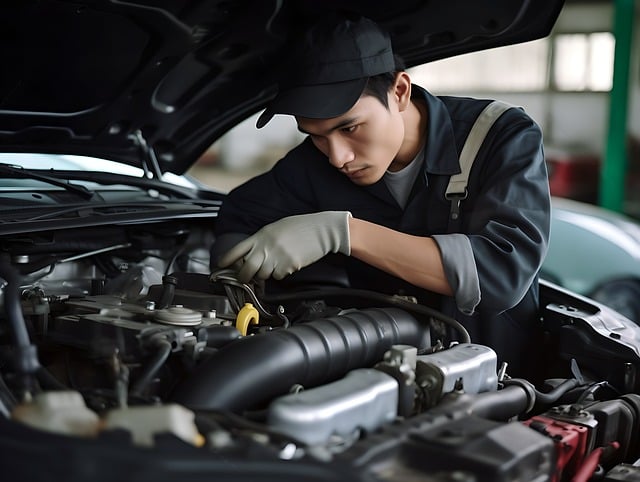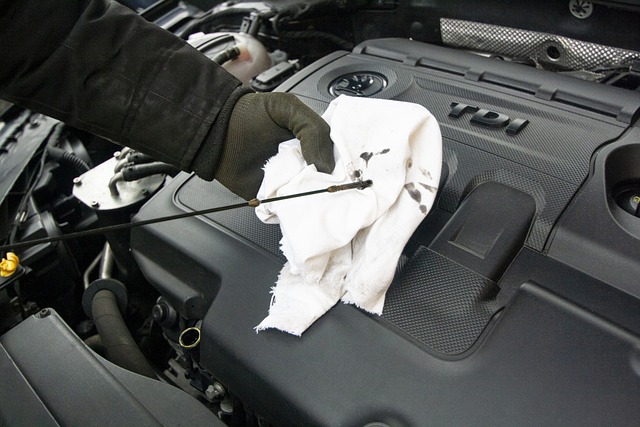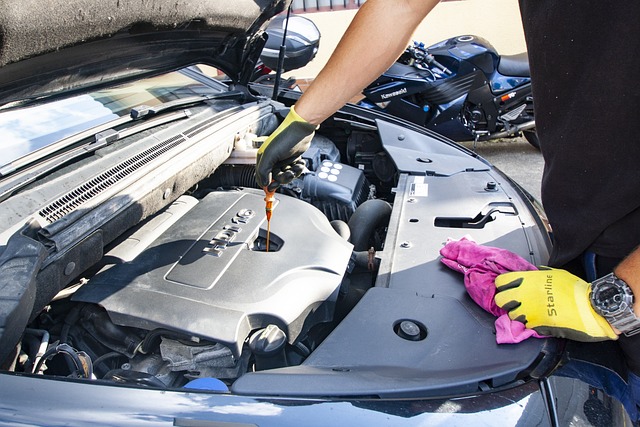Introduction:
It is the duty of automobile owners to keep their vehicles in good working order and to guarantee their lifespan and safety. In addition to extending the life of your car, routine maintenance keeps you safe and prevents expensive repairs down the line. To maintain the best possible condition for their vehicle, drivers should be aware of these vital auto care guidelines.
Frequent Oil Changes:
Regular oil changes are one of the most important parts of automobile maintenance. By lubricating the engine’s moving components, engine oil reduces wear and friction. Engine harm may result from polluted and less effective oil over time. As directed in your owner’s handbook or by the manufacturer, replace your oil at the recommended intervals—typically every 5,000 to 7,500 miles.

Verify the tire pressure:
For long-term tire life, fuel economy, and safety, proper tire pressure is essential. Prior to lengthy excursions and at least once a month, check the pressure in your tires. Overinflated tires may impair handling and grip, while underinflated tires can increase fuel consumption and lead to premature deterioration. For information on the proper tire pressure for your automobile, see the owner’s handbook or the sign that is placed inside the driver’s door jamb.
Sustain Liquid Levels:
Maintain the levels of all the fluids in your automobile, including the coolant, brake, gearbox, and windshield washer fluid, on a regular basis. Low fluid levels may cause transmission problems, braking failure, engine overheating, and blurred vision. Check for leaks and replenish fluids as required, according to the manufacturer’s instructions.
Change the Filters:
Your car’s lifetime and performance are greatly influenced by the fuel, oil, and air filters. Fuel filters guarantee that clean fuel enters the engine, oil filters eliminate pollutants from the oil, and air filters keep contaminants out of the engine. For best engine performance and to avoid damage, replace these filters at the intervals specified by the manufacturer.
Check Brakes Frequently:
Any vehicle’s brakes are an essential part of its safety system. Examine the brake fluid levels, rotors, and pads on a regular basis. A soft brake pedal, grinding sounds, or squealing sounds are indicators of brake wear or problems that need quick repair. For safe braking performance, have a qualified technician test your brakes and replace any worn parts right away.
Maintain the Battery’s Quality:
Reliability in automobile starting is largely dependent on a well kept battery. Regularly clean the battery terminals with a solution of baking soda and water and inspect them for corrosion. Make sure there are no loose connections and that the battery is placed firmly. Have your battery examined and changed if needed if it is older than three years or is exhibiting symptoms of weakening.
Be Aware of Warning Lights:
Many warning lights and indicators are included in modern cars to notify drivers of possible problems. Keep an eye out for warning lights like the battery warning light, oil pressure light, and check engine light. Disregarding these alerts may result in serious harm or malfunctions. If a warning light appears, quickly seek expert help or refer to your owner’s handbook.

Examine and swap out the wiper blades:
Safe driving requires having clear sight, particularly in bad weather. Check the wiper blades on your windshield on a regular basis for wear indicators like streaks or skipping. If they are broken or can no longer clear the windshield, replace them. In order to maintain a clean windshield, make sure the reservoir for washer fluid is filled with the appropriate washer fluid.
Examine and keep up the cooling system:
The cooling system controls the engine’s temperature and guards against overheating. Regularly check the coolant level and look for leaks in the radiator, hoses, or connections. Coolant may become contaminated or lose its efficacy over time, so follow the manufacturer’s instructions for flushing and changing the coolant.
Examine the external lights:
Being able to see clearly and communicate your intentions to other drivers depends on your external lighting working properly. Check the headlights, taillights, brake lights, turn signals, and warning lights on a regular basis. Bulbs that are fading or burned out should be replaced. While you are inside the car, think about asking a buddy to help you check the turn signals and brake lights.
Keep your wheels balanced and aligned properly.
Tire wear, handling, and fuel economy are all impacted by wheel alignment and balance. It could be time for wheel alignment or balancing if you see uneven tire wear, steering that pulls to one side, or vibrations at certain speeds. To encourage equal tire wear, rotate your tires in accordance with the specified timetable and get your alignment checked on a regular basis, particularly after striking curbs or potholes.
Maintain a Clean Exterior and Interior:
Maintaining the cleanliness of your car’s exterior and interior not only makes it seem better, but it also keeps the surfaces from deteriorating. To get rid of debris, filth, and corrosive materials like road salt or bird droppings, wash the outside on a regular basis. To avoid stains, smells, and dangerous bacteria accumulation, thoroughly clean the inside, including the dashboard, carpets, and upholstery. To preserve the quality and increase the lifespan of external surfaces, think about using protective coatings or treatments.
Comply with Maintenance Scheduled Tasks:
For a detailed manufacturer maintenance plan, see the owner’s handbook for your car. The particular maintenance procedures and intervals listed in this plan are based on the make, model, and mileage of your car. To maintain optimal vehicle performance and, if applicable, warranty coverage, adhere to the suggested service intervals for inspections, fluid changes, and component replacements.

In summary:
You may further improve the durability, safety, and dependability of your automobile by implementing these extra car care ideas into your routine. Keep in mind that preventative maintenance not only makes driving easier and more pleasurable, but it also ultimately saves you time and money. To maintain your automobile in great shape for years of trouble-free driving, make it a habit to do routine inspections, take quick care of problems, and give preventative maintenance priority.
FAQ about Auto Maintenance:
How frequently should the oil in my automobile be changed?
Generally speaking, you should replace the oil in your automobile every 5,000 to 7,500 miles, or as directed by the owner’s handbook. This period, however, can change according on the kind of oil you use and how you drive.
How can I tell whether the battery in my vehicle needs to be changed?
Dimming headlights, trouble starting the engine, and strange electrical behavior are all indicators of a dying battery. See a qualified technician to test your battery if it is older than three years or if it seems to be weakening.
When should I change the air filter in my car?
Usually, air filters need to be changed every 15,000 to 30,000 miles, or more often if you travel through dusty or dirty areas a lot. Fuel economy and engine performance might be affected by an obstructed air filter.
How can I maintain the brakes on my car?
Check for wear or leaks on a regular basis on your brake pads, rotors, and brake fluid levels. A soft brake pedal, grinding sounds, or squealing sounds are signs that your brakes may need maintenance. Get a qualified technician to check your brakes, and replace any worn parts right away.
How frequently should I check my tire pressure and why is it important?
For long-term tire life, fuel economy, and safety, the right tire pressure is crucial. Using a tire pressure gauge, check your tires’ pressure before taking any lengthy excursions and at least once a month. Overinflated tires may impair handling and grip, while underinflated tires can increase fuel consumption and lead to premature deterioration.
How should my car’s cooling system be maintained?
Check the coolant level often and look for leaks in the radiator, hoses, or connections. To avoid engine overheating and corrosion, think about cleansing and changing the coolant in accordance with the manufacturer’s instructions.
In the event that a warning light appears on my dashboard, what should I do?
See your car’s owner’s handbook for instructions if a warning light appears on your dashboard, such as the oil pressure or check engine light. While some warning lights only point to small concerns, others could signify more serious issues that need to be addressed right away. It is better to have a qualified technician diagnose the problem.
How often should the tire alignment of my automobile be checked?
Wheel alignment should be checked on a regular basis, usually every 6,000 to 12,000 miles, or more often if you experience vibrations at certain speeds, uneven tire wear, or pushing to one side with the steering. To encourage even wear, have your tires rotated in accordance with the manufacturer’s suggested timetable.
What does a planned maintenance service cover?
The brand, model, and mileage of your car determine which scheduled maintenance has to be done. Oil changes, filter replacements, fluid checks, tire rotations, brake inspections, and other maintenance may be considered common activities. See the owner’s handbook of your car for a detailed maintenance plan.
How can I safeguard the surfaces inside and outside of my car?
Wash and wax your car’s exterior on a regular basis to get rid of debris, grime, and other impurities that may harm the paint and finish. To avoid stains, smells, and degradation, thoroughly clean the dashboard, carpets, and upholstery. To preserve the look and extend the life of external surfaces, think about using protective coatings or treatments.